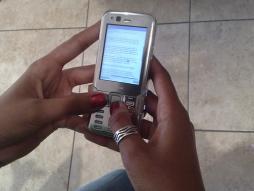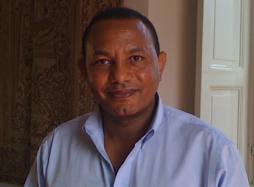mhealth
Posted by KatrinVerclas on Dec 16, 2008
Jonathan Donner, Kentaro Toyama, and I recently wrote a paper -- "Reflections on the M4D Landscape" -- in which we critically examine the current diversity of projects and approaches in M4D.
We identify four common choices facing individual projects in mobiles for development: who are the intended users, how technically accessible the solution is, whether the project links to other platforms or content, and what the project requires from handset manufacturers and operators.
We think that these choices collectively mark aspects of the current landscape of M4D. We also think that these choices made at the project level may create different M4D landscapes with implications for the breadth and depth of the technology’s impact on development.
Posted by dsasaki on Jul 31, 2008
Krishnan Ganapathy, a practicing neurosurgeon, is the former president of the Neurological Society of India and current president of the Apollo Telemedicine Networking Foundation. He is also the co-founder of the Telemedicine Society of India, a member of the National Task Force on Telemedicine and an adjunct professor at IIT Madras and at Anna University. He is currently involved in preliminary studies on the clinical evaluation of patients based in rural areas of India, Bhutan, and Bangladesh using wireless telephony. Along with his colleague Aditi Ravindra, Dr. Ganapathy is one of the leading thinkers on mobile health in India and around the world.
What follows is an edited, abridged transcribe from a conversation we had at Rockefeller's Making the eHealth Connection conference. An MP3 of our entire discussion is available for download.
DS: A lot of people don't have an understanding of what mHealth is, what telemedicine is, and how mobile phones are being used by physicians, surgeons, and health care professionals. You've been on the cutting edge of all this for a long time ... can you talk to me about how the way you treat patients has changed over the years with the use of mobile phones?
Posted by CorinneRamey on Jul 31, 2008
In South Africa, mobile phones and HIV/AIDS are two pervsasive realities. Some 75% percent of children and adults in the country have mobile phones, and according to the National HIV Survey, 10.8% of people over two years old are living with HIV. Almost 1,000 AIDS deaths occur every day. Cell-Life, an NGO based in Cape Town, aims to address this growing AIDS epidemic by using mobile phones.
Cell-Life's "Cellphones for HIV" project continues with two new pilot projects. In one pilot, Cell-Life will collaborate with the Treatment Action Campaign (TAC) in the Western Cape to provide information to communicty trainers and the wider HIV community. In the second pilot, Cell-Life will work with Soul City, which uses television and radio dramas to discuss issues such as social norms, health, and HIV/AIDS.
Posted by dsasaki on Jul 30, 2008
Berhane Gebru is Program Director at AED-SATELLIFE, an international organization which aims to strengthen health care in resource-poor countries by providing disease surveillance solutions and health information distribution to rural healthcare workers using mobile technology. He took some time out from this week's meeting on mHealth and Mobile Telemedicine to describe SATELLIFE's current project in Uganda which equips rural health workers with PDA's and GPRS wireless access points in order to transmit their health data collection to the ministry of health. We also discuss an upcoming project, currently being field-tested, which would allow those same health care workers to make their disease surveillance reports using simple mobile phones.[Editor's note: A full case study of AED Satellife's project is written up in our recent report "Wireless Technology for Social Change," commissioned by the UNF/Vodafone Group Foundation Technology Partnership]
At the bottom of the post you can download an audio recording of our entire 20-minute conversation. This is an edited and abridged transcription.
Posted by dsasaki on Jul 30, 2008
Mobile banking has been touted as such a wild success story for one simple reason: mobile phones have penetrated the market in rural areas of developing countries in the last five years more successfully than traditional banks have been able to over the past 100 years. You can travel to any remote village just about anywhere in Sub-Saharan Africa and it is rare that you will find a bank; far rarer that you will find an ATM. (I remember waiting three and a half hours to use an ATM once in Namibia.) But you are guaranteed to hear ringtones.
Once banks realized that basic financial transactions (deposit, withdrawal, payment, check balance) can all be done over a mobile phone, they understood that the banking services they offer can finally reach customers in places where just a few years earlier they had never dreamed of doing business.



